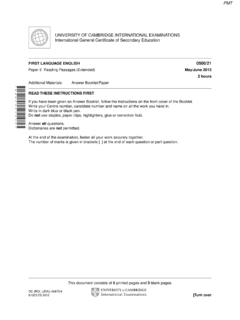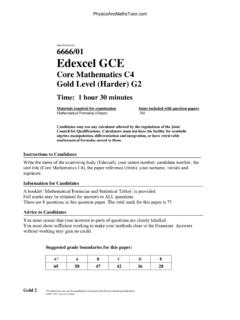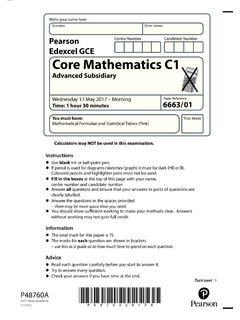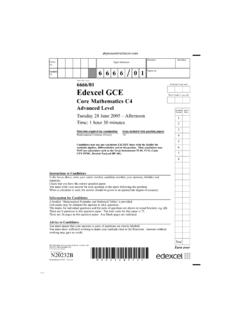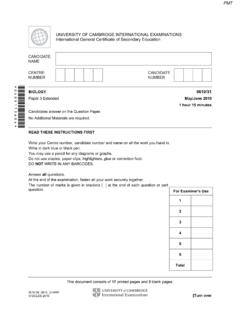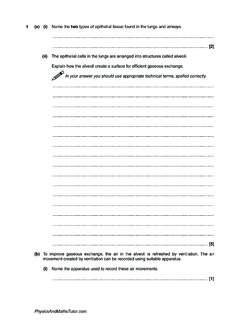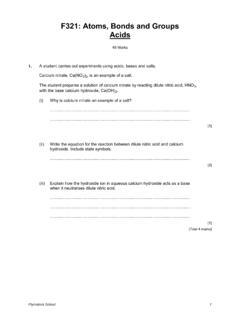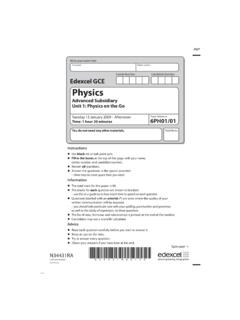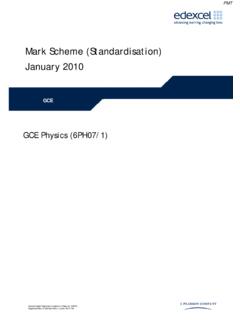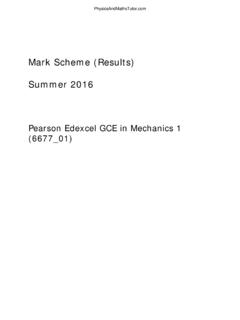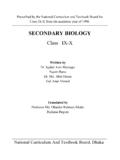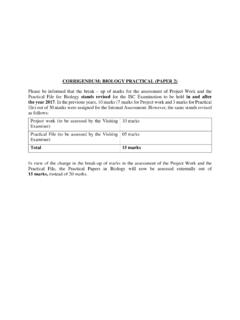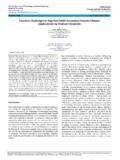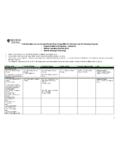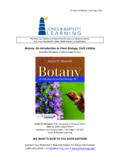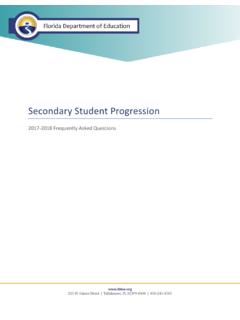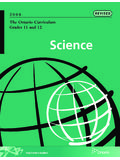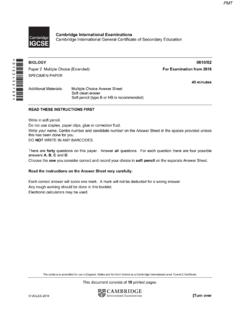Transcription of Cambridge International Examinations Cambridge ...
1 This document consists of 18 printed pages and 2 blank (NF/SW) 93276/4 UCLES 2015 [Turn overCambridge International ExaminationsCambridge International General Certificate of Secondary Education*3022478872*BIOLOGY 0610/21 Paper 2 Core May/June 20151 hour 15 minutesCandidates answer on the Question Additional Materials are THESE INSTRUCTIONS FIRSTW rite your Centre number, candidate number and name on all the work you hand in dark blue or black may use an HB pencil for any diagrams or not use staples, paper clips, glue or correction NOT WRITE IN ANY all calculators may be may lose marks if you do not show your working or if you do not use appropriate the end of the examination , fasten all your work securely number of marks is given in brackets [ ] at the end of each question or part syllabus is approved for use in England, Wales and Northern Ireland as a Cambridge International Level 1/Level 2 UCLES 20151 Flowering plants can be divided into two groups: monocotyledons and eudicotyledons (dicotyledons).]
2 Complete Table to state the differences between these two types of flowering plants. An example has been done for (dicotyledons)number of cotyledons in the seed12pattern of leaf veinsnumber of petals present[4][Total: 4]PMT30610/21/M/J/15 UCLES 2015[Turn over2 (a) (i) Sometimes teeth develop dental decay. Describe how dental decay develops.. [4]PMT40610/21/M/J/15 UCLES 2015 (ii) Table states three methods of caring for the teeth to prevent dental decay. Complete Table by describing why each method is of caring for the teethdescription of why the method is effectivebrushingrinsing the mouth after eatingnot eating sweet foods between meals[3] (b) (i) There are four types of teeth. State the functions of each of the following when food is being ..canines ..premolars and molars ..[3] (ii) Suggest how the tongue helps in the process of chewing.]
3 [1]PMT50610/21/M/J/15 UCLES 2015[Turn over (c) Describe two reasons why solid food is chewed before it is ..2 ..[2][Total: 13]PMT60610/21/M/J/15 UCLES 20153 Fig. shows the human respiratory (a) On Fig. use label lines to identify: a bronchiole; the larynx; the trachea.[3] (b) Fig. shows: a group of alveoli and the capillaries surrounding them in a human lung; a section through this group of alveoli with most of the capillaries removed; a magnified section of part of the wall of an alveolus and its of alveolicut opengroup of alveoli andcapillaries surroundingthemsection throughalveoli with most of thecapillaries removedmagnified section of thewall of an alveolus andits capillaryairliquid filmalveolus wallcapillary wallred blood cellair outblood frompulmonaryarterycapillaryalveolusbloo d topulmonaryveinair inFig. UCLES 2015[Turn over Use Fig. to describe three features of gas exchange surfaces in 1.]]
4 Feature 2 ..feature 3 ..[3] (c) In an investigation a student recorded the volume of air inspired in one minute. The measurement was taken while the student was resting and again when the student had run an 800 m race. The results are shown in Table of air inspired / dm3 per min before the race the end of the (i) Calculate the increase in the volume of air inspired by the student at the end of the race.. dm3 per min [1] (ii) State two changes that the body makes to increase the volume of air ..2 ..[2] (iii) Suggest one reason why the body needs more air during exercise.. [1][Total: 10]PMT80610/21/M/J/15 UCLES 20154 (a) Describe how deforestation harms the environment.. [4] (b) Humans are polluting the environment. Complete Table by naming two examples of pollutants in each part of the environment.
5 You should name different pollutants for each part of the of the environmentpollutantair1 ..2 ..land1 ..2 ..water1 ..2 ..[3][Total: 7]PMT90610/21/M/J/15 UCLES 2015[Turn over5 (a) Define the following genetic ..heterozygous ..recessive allele ..[6] (b) People use sun-cream to protect their skin. Ultra-violet light from the sun is a type of ionising radiation. Fig. shows sun-cream being Suggest how using sun-cream reduces the damaging effect of the Sun s rays..[1]PMT100610/21/M/J/15 UCLES 2015 (c) Fig. shows the hand of a person who suffers from a mutation that results in people having more than five digits on each hand (polydactyly).Fig. The mutation that results in this condition is dominant. Fig. shows how the condition is inherited in a bypolydactylyFig. UCLES 2015[Turn over (i) State the genotype of the individuals shown in Fig.]]
6 Use AA, Aa or aa. Write your answers in Table person on Fig. of person 1 2 3 9[4] (ii) Using evidence from Fig. , state which of the couples, P, Q or R, provides proof that the mutation is not .. [1] (iii) Explain the reason for your answer.. [2][Total: 14]PMT120610/21/M/J/15 UCLES 2015 BLANK PAGEPMT130610/21/M/J/15 UCLES 2015[Turn over6 Fig. shows a section through a (a) Using label lines, identify the following structures on Fig. : the plumule; the radicle; the testa.[3] (b) Name the structure in the seed that contains a store of food.. [1] (c) State the importance of seed dispersal to a plant.. [1][Total: 5]PMT140610/21/M/J/15 UCLES 20157 (a) Fig. shows the relationships between some organisms in part of an drawn to scaleFig. (i) Finches are another organism in this ecosystem.]
7 These birds eat the seeds that the tree produces, and the hawks and eagles eat the finches. Add this information to Fig. [3] (ii) Suggest and explain two changes that might occur if the eagles in this ecosystem died ..explanation ..PMT150610/21/M/J/15 UCLES 2015[Turn overchange ..explanation ..[4] (b) The boxes on the left contain the names of types of organisms found in a food web. The boxes on the right contain definitions of these types of organisms. Draw a line from each box on the left to the box on the right that states its definition. One example has been done for animal that gets its energy by eating other animalsthe position of an organism in a food chain, food web or pyramid of numbers, biomass or energyan animal that gets its energy from eating plantsan organism that gets its energy from feeding on other organismsan organism that gets its energy from dead or waste organic matteran organism that makes its own organic nutrients, usually using energy from sunlight, through photosynthesis [4][Total: 11]PMT160610/21/M/J/15 UCLES 20158 (a) The digestive system produces enzymes.]
8 Define the term enzyme.. [2] (b) Fig. shows how the reaction rates of two different enzymes, L and M, vary when the pH of reaction012345678910pHacidicalkalineneut ralenzymeLenzymeMFig. Use Fig. to state the pH at which each of these enzymes work the for enzyme L: ..pH for enzyme M: ..[2]PMT170610/21/M/J/15 UCLES 2015[Turn over (c) Table lists the names of three enzymes found in the alimentary canal. Complete Table by writing in the names of the substrate and one end-product for each enzyme. Choose your answers from the acidscellulosefatfatty acidsglucoseglycerolmaltoseproteinstarch vitaminsTable of enzymesubstrateone end-productamylaselipaseprotease[6][Tota l: 10]PMT180610/21/M/J/15 UCLES 20159 (a) Fig. shows a green Plants need to move substances around between their leaves, stems and roots. One of the processes they use is translocation.]
9 Describe the process of translocation.. [3]PMT190610/21/M/J/15 UCLES 2015 (b) Fig. shows the whole plant and sections through its root, stem and a On Fig. use label lines and the letter X to identify one region of xylem in each section (root, stem and leaf). [3][Total: 6]PMT200610/21/M/J/15 UCLES 2015 Permission to reproduce items where third-party owned material protected by copyright is included has been sought and cleared where possible. Every reasonable effort has been made by the publisher (UCLES) to trace copyright holders, but if any items requiring clearance have unwittingly been included, the publisher will be pleased to make amends at the earliest possible avoid the issue of disclosure of answer-related information to candidates, all copyright acknowledgements are reproduced online in the Cambridge International Examinations Copyright Acknowledgements Booklet.
10 This is produced for each series of Examinations and is freely available to download at after the live examination International Examinations is part of the Cambridge Assessment Group. Cambridge Assessment is the brand name of University of Cambridge Local Examinations Syndicate (UCLES), which is itself a department of the University of PAGEPMT
